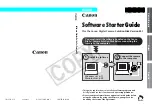
Setting up HTTP access to the CUBE
TANDBERG Analytics Extension Admin guide
25
Setting the target Analysis Services server
1. Open the folder containing the binary files (C:\inetpub\wwwroot\analytics-pump, if you used the
example values above).
2. Open the
msmdpump.ini
file in a text editor.
3. Locate the
<ServerName>localhost</ServerName>
line in the .ini file.
4. If you installed Analysis Services using the default instance, leave the setting unchanged. If you
use a named instance of Analysis Services, change the setting accordingly. For example, if the
instance is named “myinstance”, the line should be changed to
<ServerName>localhost\myinstance</ServerName>.
5. If you installed the HTTP pump on another server than your data warehouse server, replace
localhost
with the data warehouse machine name.
Creating a domain service account and giving it read access to the cube
You will need to create a domain account that is allowed to read the cube. This may be any domain
account, as long as it is member of the
Reader role
defined in the
tmsng_dwhAsDB
Analysis
Services database. See the
Analytics Extension Installation guide
for instructions on adding accounts
to this role.
This account will be used by all clients that access the HTTP pump. TANDBERG recommends setting
up this account so that users are not allowed to change its password.
Verifying that the connection works
The HTTP pump is now set up and ready to use.
You should verify your setup by connecting to it from a computer that is not in the same domain as the
data warehouse server. It is assumed in this section that you are using Microsoft Excel to test the
connection, but any client that can connect to an OLAP cube may be used.
Open a new workbook, and create a new workbook connection to Microsoft SQL Server Analysis
Services by going through Excel‟s Data Connection Wizard. See the
TANDBERG Analytics Extension
Installation guide
for a guide to creating connections.
In the step where you normally enter the server name, enter the url to the HTTP pump instead (Figure
15). For example, if your IIS resides on dwh.example.com, the full url to the HTTP pump will be
http://dwh.example.com/analytics-pump/
(note the trailing slash). Use the username and
password of the service account you just created.
Figure 15
When saving the data connection file, make sure to select
Save password in file
(Figure 16).












































